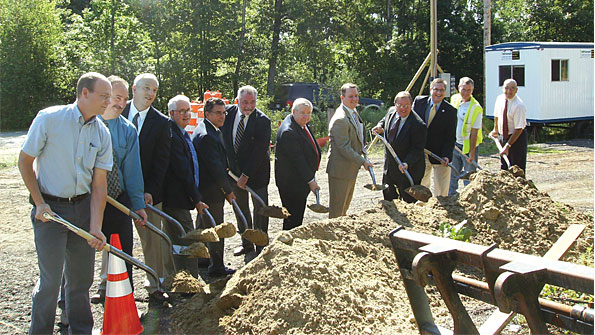Finding ways to finance infrastructure projects
What is in this article?
Finding ways to finance infrastructure projects
A version of this article appeared in the September 2012 print issue with the headline: Knowing where to look.
For many local government officials across the United States, the question isn't where to spend money, but what to cut, and many of those cuts have come from infrastructure spending. Cities and counties are spending less on schools, roadways, sewer and water systems than they have in decades. In fact, municipal infrastructure spending alone is down by nearly 30 percent since 2009, according to a recent report from the U.S. Department of Commerce. Those cuts are likely to have far-reaching implications such as undermining public health and safety as roadways, drinking water and sewage systems continue to deteriorate.
However, money is available for infrastructure improvements. In fact, since the beginning of the recession in 2008, both the federal government and individual states have taken an active role in assuring that funds are available for all types of projects. And, even though the flow of funds has slowed over the past year or two, numerous sources of financial assistance for infrastructure projects exist. The problem is that many municipal managers just don't know where to look for those funds.
Hidden in plain sight
Take water and wastewater projects, for example. When money is tight, those are among the first projects to be cut. After all, they can be costly, and deterioration of water and wastewater systems isn't always as easy to see as damage to roads or schools.
The most common mistake communities make when seeking to fund water or wastewater infrastructure projects is relying solely on traditional funding sources to underwrite infrastructure improvements. For instance, communities might turn to the EPA's Clean Water State Revolving Fund to pay for improvements. While programs like these can be an important source of funding, they typically involve loans, and they don't provide all of the money that is needed to complete the work.
Fortunately, there are alternative funding sources available to help underwrite some water and wastewater projects. For instance, the U.S. Department of Agriculture (USDA) isn't typically thought of as a source of aid for wastewater projects. However, there are thousands of rural communities throughout the United States facing crumbling infrastructure, and the USDA's focus is primarily on serving rural communities. As such, the agency has a number of grant programs available for projects of all types, including vital development projects.
Troy and Jay, Vt., stand out as a good example of how rural communities can take a non-traditional approach to obtaining USDA funds to help finance wastewater infrastructure improvements. The two Northern Vermont communities recently banded together to access nearly $14 million to complete badly needed public sewer projects.
With the help of USDA-Rural Development funds, as well as several complementary grants, the two communities were able to construct several facilities to treat the wastewater that is discharged into the nearby Missisquoi River, which then runs into Lake Champlain. The project is providing important healthcare and environmental benefits, and it was made possible primarily by USDA-Rural Development funds.
The USDA also has grants available through its Rural Utilities Service (RUS) program for low-income communities. The program is designed to provide utility services and improvements to America's neediest communities, and it can be a terrific source of funding. Even cities and towns that may not typically meet the income requirements of RUS may be able to access the grants by tailoring applications to specific sections of the town that do meet those requirements, and then carving out districts when applying for RUS grants.

















A good article that alerts us
A good article that alerts us to hidden or overlooked resources.
However, there’s an even larger problem. Infrastructure projects can be double-edged swords. Well-designed and well-executed projects (water & sewer, transportation, schools, etc) can result in higher land prices that chase affordable development away to cheaper, but more remote sites. This sprawl development then requires the duplication of expensive infrastructure at these more remote locations.
To add insult to injury, the public ends up paying for infrastructure projects at least twice. First, they pay taxes (federal state or local) to generate the funds. Second, they pay higher rents to occupy sites that their taxes have made more valuable as a result of improved infrastructure. Sometimes, we pay a third time, to subsidize affordable development at locations made valuable by infrastructure investments.
Fortunately, some communities have remedied this situation by using value capture to transform their property tax into a public services access fee. This is accomplished by reducing the tax rate on building values while increasing the tax rate on land values. The lower rate on buildings makes them cheaper to construct, improve and maintain. Surprisingly, the higher rate on land values makes land more affordable by reducing the profit from real estate speculation.
As an added bonus, this approach to property taxation creates an economic imperative to develop high-value sites. These tend to be infill sites near urban infrastructure amenities. Thus this approach encourages compact, infill development which saves nearby farmland and reduces the need to prematurely extend expensive infrastructure into exurban areas.
For more information, see “Using Value Capture to Finance Infrastructure and Encourage Compact Development.” It can be found at https://www.mwcog.org/uploads/committee-documents/k15fVl1f20080424150651.pdf